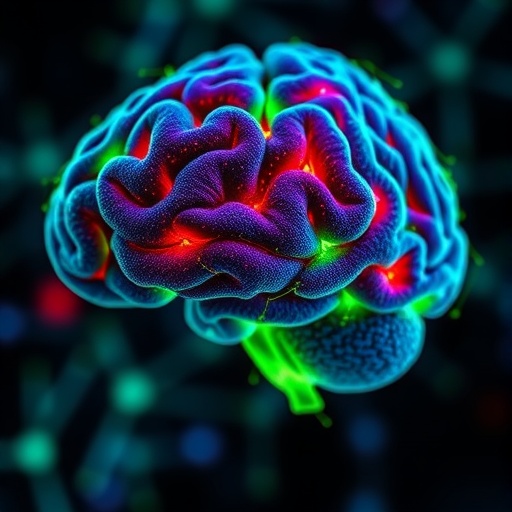In the ever-evolving landscape of neurodegenerative disease research, a breakthrough study has emerged, highlighting the intricate interplay between microglial polarization and neuroinflammation within the context of Alzheimer’s disease. The recent investigation led by Wang, Bu, and Cao delves into the molecular mechanisms by which Mir-199a-3p exacerbates neuroinflammatory responses in a transgenic mouse model specifically designed to study Alzheimer’s. The relevance of these findings extends beyond mere academic curiosity, as they suggest potential therapeutic targets for a condition that currently lacks effective treatments.
The pathogenesis of Alzheimer’s disease is a complex interplay of genetics, environmental factors, and cellular responses. Recent studies have pinpointed neuroinflammation as a significant contributor to the progression of this debilitating condition. The current research reinforces this notion by demonstrating how the modulation of microglial activity, particularly the shift toward M1 polarization, is influenced by Mir-199a-3p. This microRNA has gained attention for its regulatory effects on various biological processes, and its role in neuroinflammation marks a pivotal area for further inquiry.
Microglia are the resident immune cells of the central nervous system and play a critical role in maintaining homeostasis. Under pathological conditions, these cells can adopt different activation states, commonly categorized into pro-inflammatory M1 and anti-inflammatory M2 phenotypes. The study reveals that elevated levels of Mir-199a-3p correlate with an increased proportion of M1-polarized microglia. This finding not only underscores the significance of microglial activation states in Alzheimer’s pathology but also emphasizes the need for targeted interventions that can modulate these responses.
The ability of Mir-199a-3p to promote M1 polarization sheds light on potential therapeutic avenues. As researchers seek to develop strategies aimed at mitigating neuroinflammation, modulating the expression or activity of microRNAs like Mir-199a-3p could be a promising approach. The study elucidates the underlying molecular pathways by which Mir-199a-3p influences microglial polarization, providing a basis for targeted drug development. By counteracting the effects of this microRNA, it may be possible to shift the balance of microglial activation from a pro-inflammatory to a neuroprotective state.
Furthermore, the implications of this research extend beyond the confines of Alzheimer’s disease. Neuroinflammation is a common feature across various neurodegenerative disorders, including Parkinson’s disease and multiple sclerosis. Understanding the role of microRNAs in these processes may yield novel insights that could be applicable to a broader range of conditions. The overarching theme of the study encourages a holistic understanding of neuroinflammation that transcends individual diseases, paving the way for universal therapeutic strategies.
As exciting as these findings are, they also prompt critical questions regarding the future of disease management and prevention strategies. The interplay of genetic risk factors and environmental triggers in neuroinflammatory responses remains an area ripe for exploration. This research serves as a reminder that unraveling the complexities of neurodegenerative diseases requires a multifaceted approach that integrates genetic, epigenetic, and environmental considerations.
The team’s methodology involved the examination of microglial cells harvested from transgenic mouse models that exhibit typical Alzheimer’s pathology. Through their investigative lens, they were able to observe and quantify the effects of Mir-199a-3p on microglial activation. These insights were bolstered by advanced imaging techniques and molecular analyses that provided a comprehensive view of cellular responses to neuroinflammatory stimuli.
In the broader scope of research, this study represents a crucial step toward elucidating the relationship between microRNAs and their roles in neuroinflammatory phenomena. The evidence presented illuminates a pathway through which elevated levels of Mir-199a-3p may exacerbate neurodegenerative processes, highlighting the necessity for further studies to validate these findings in human cohorts.
In addressing the therapeutic potential, future research must focus on the feasibility of targeting microRNA pathways to develop effective treatments. The existing pharmaceutical landscape for Alzheimer’s disease remains bleak, underscoring the urgency for innovative strategies. As new techniques in gene editing and RNA interference continue to mature, the prospect of selectively manipulating microRNA expressions may soon become a reality.
The study concludes with a call to the scientific community to explore the intersection of microRNA research and neuroinflammation more thoroughly. Engaging with this field could foster collaborative efforts between neurobiologists, pharmacologists, and clinical researchers, ultimately leading to breakthroughs in both understanding and treating Alzheimer’s disease.
In summary, the research presented by Wang, Bu, and Cao contributes significantly to our understanding of how microRNAs like Mir-199a-3p can influence neuroinflammatory processes in Alzheimer’s disease. It also opens new avenues for therapeutic exploration, emphasizing the importance of targeting microglial activation states to alleviate the burden of neurodegeneration. As we advance in our understanding of these molecular mechanisms, the hope is that future investigations will ultimately translate into effective interventions for patients afflicted by this devastating disease.
Thus, the narrative of Alzheimer’s disease is not just a tale of loss and decline; it is also one of discovery and hope. With each new study, like the one discussed here, we inch closer to a more profound understanding of the brain and its complexities. This research is a testament to the resilience of science in the face of challenges, inspiring a new generation of researchers to tackle one of humanity’s greatest medical puzzles.
Subject of Research: Mir-199a-3p and its role in neuroinflammation in Alzheimer’s Disease
Article Title: Publisher Correction: Mir-199a-3p aggravates neuroinflammation in an Alzheimer’s disease transgenic mouse model by promoting M1-polarization microglia.
Article References: Wang, C., Bu, X., Cao, M. et al. Publisher Correction: Mir-199a-3p aggravates neuroinflammation in an Alzheimer’s disease transgenic mouse model by promoting M1-polarization microglia. BMC Neurosci 26, 58 (2025). https://doi.org/10.1186/s12868-025-00974-4
Image Credits: AI Generated
DOI:
Keywords: Neuroinflammation, microglia, Alzheimer’s disease, Mir-199a-3p, M1 polarization, microRNA, transgenic mouse model.




